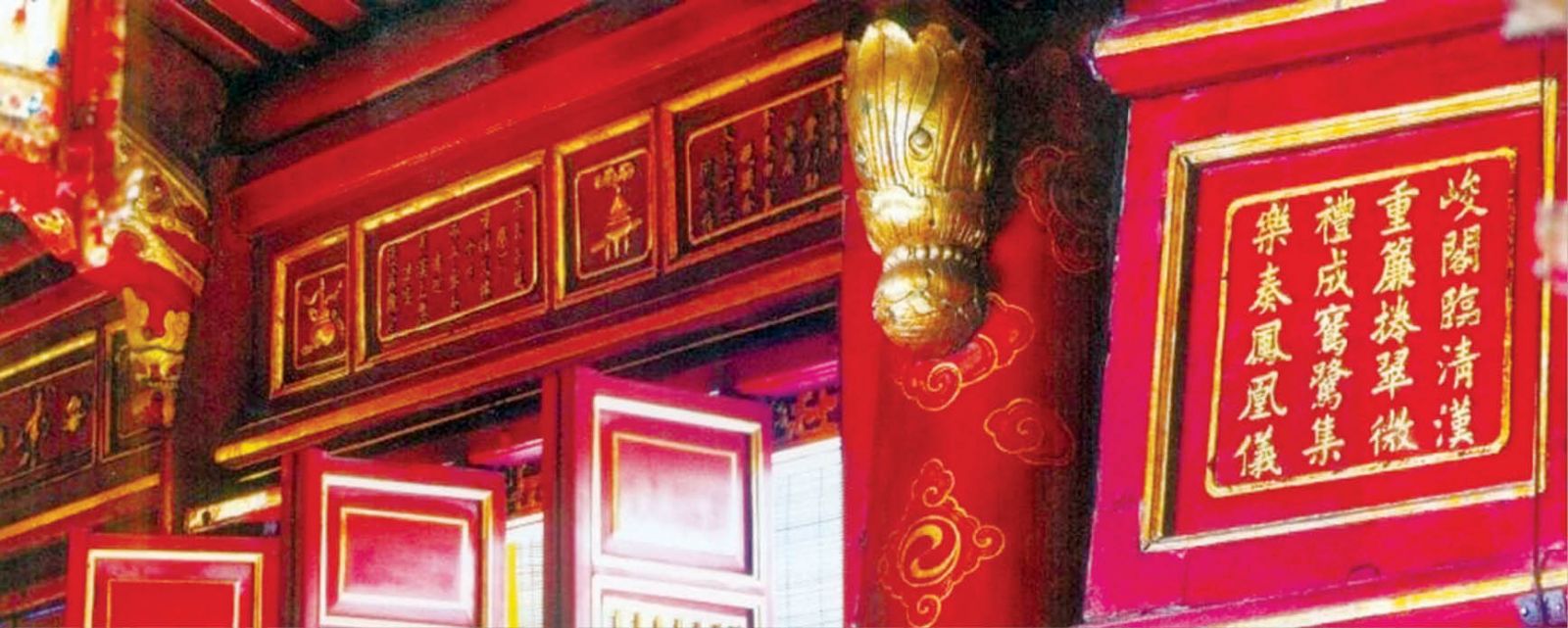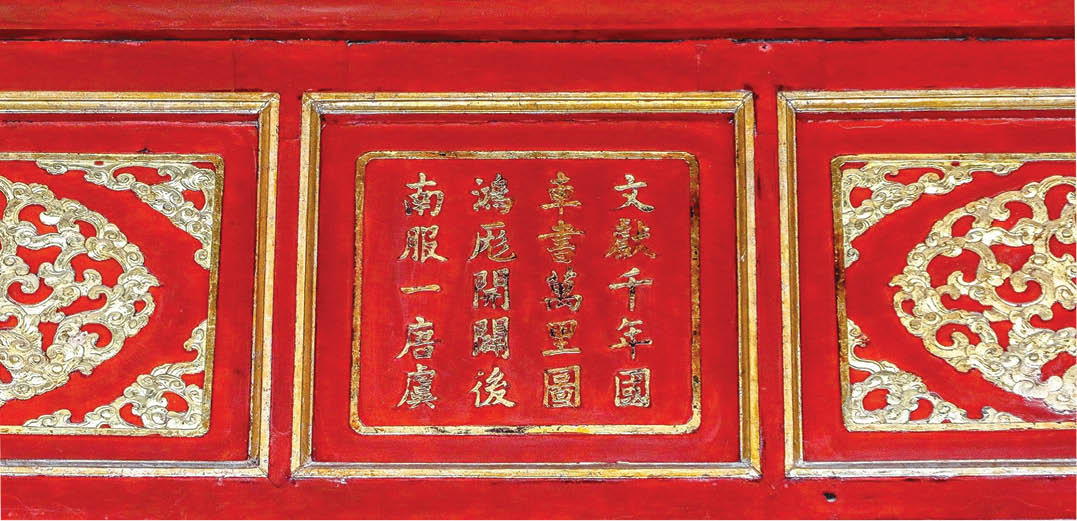
Literature at Thai Hoa Palace
Thai Hoa Palace was the venue where the emperor held governing council to settle state affairs, and it was also the place where the most important ceremonies of the court were organized. The palace was built in 1805 under Emperor Gia Long’s reign. During the reign of Emperor Minh Mang (1833), Thai Hoa Palace was completely restored and relocated to its current position.
This is the most magnificent palace of the Imperial Citadel, remaining fairly intact to this day. It can be considered as a standard architectural work of harmonious balance, majestic appearance, and glorious splendor. Especially, the special decoration style of "one poem - one painting" (one painting is placed adjacent to one poem) is very unique to the Nguyen Dynasty.
There are 248 blocks of poems carved on wood in the interior of Thai Hoa Palace. Poems on enameled bronze decorated on the co diem (space in-between the two layers of roofs) include 53 blocks. Accompanying the poems are decorative motifs of "one poem - one painting", "one poem - one Sino-character" (one Sino-character is placed adjacent to one poem) arranged both in the interior and exterior, at the front and back of the palace, at the roof banks, co diem and panels of the beams.
Functioning as the administrative face and playing the most important role in internal and external relations, the manifestations of the scale of the structure of Thai Hoa Palace clearly show the order and hierarchy of society; especially, the poems decorated on the palace also carry the same political meaning.
According to Ms. Le Thi An Hoa, Head of Scientific Research Department, Center for Conservation of Hue Monuments, the poems on enameled bronze are mainly poems describing scenery, praising spring glamour and wishing for good harvests and lush vegetation.
The poems in the interior of the palace mostly carry the manifesto of a dynasty and an independent and self-sufficient country in relations with foreign countries, or topics on political and social issues.

Most of the poetry at Thai Hoa Palace is the poems of Emperor Minh Mang
The Nguyen Dynasty conveyed in the decorative poetry blocks in the palace the declarations of the dynasty, affirming the country's sovereignty as well as the ability to build and protect the nation. The poems praise the prosperity of the dynasty and the merits of the emperors who had expanded the territory and brought independence to the People. They also praise the achievements of the political and education system which was built upon the foundation of unbiased and virtuous thought.
The poems also praise the country under a dynasty with hierarchy, order, ceremony and music surpassing all previous dynasties.
Poetry at Thai Hoa Palace also has a proverbial nature and was the training motto of emperors and mandarins. In addition, the emperor also conveyed his dream in the verse with the desire for peace and prosperity, upholding the policy of respecting farmers, expressing the desire to conquer nature and regulate floods and droughts to bring bountiful crops and peace to the people.
With outstanding carving techniques, most of the poems which Hue Monuments Conservation Center found on the literature system in Thai Hoa Palace are all by Emperor Minh Mang, documented in "Ngu che thi" (Poems composed by the Kings).
In the middle of Thai Hoa Palace, there is a famous poem “Van hien thien nien quoc” which praises the country's thousand years of culture and civilization. The poem “Thai binh tan che do” wishes for the country to be peaceful and prosperous.
Due to the special values of the literature system at Thai Hoa Palace, researchers are paying special attention to protect them during the upcoming dismantling and comprehensive restoration process.
The researcher Nguyen Xuan Hoa noted: "Thai Hoa Palace, in addition to its historical value and architectural art value, also contains a part of royal literature on architecture that has been recognized as a world documentary heritage in the Asia-Pacific region. Notably, in the interior of the palace, there are only 115 intact poems. Three poems have missing or unidentified words. On the exterior architecture, there are only 64 intact poems. Ten are completely lost and nine have missing or unidentified words. Therefore, it is necessary to restore of the system of "one poem - one painting" and "one poem - one Sino-character" on Thai Hoa palace architecture.”
Mr. Hoa is also concerned with the method of preserving this special artifact when dismantling the structure and of the plan to protect, repair and restore the lost or damaged poems and motifs. In addition, it is necessary to take advantage of this restoration to record videos, take pictures, digitize, transcribe and translate the literature system on Thai Hoa Palace architecture.
To assist the comprehensive restoration of Thai Hoa Palace, Hue Monuments Conservation Center established a scientific council to assess the current status of the work. The center has taken pictures of all components related to Thai Hoa Palace, in which special attention is paid to the system of "one poem - one painting" on wood and enameled bronze. The pictures taken must be attached to the cross section drawing of Thai Hoa Palace and to each poem image and painting on each cross section.
Ms. Le Thi An Hoa said: "The Scientific Research Department and the restoration unit have checked all of the literature system here. Any artifact that was damaged or lost were captured and recorded. We carefully and scientifically marked the position of each poem associated with each poem block going with each painting block and arranged them in order to avoid loss or confusion during the dismantling process. The blocks of enameled bronze poems would be dismantled carefully in pieces."
Each block of poetry and painting is a precious artifact. Thus, Hue Monuments Conservation Center has a plan to build a warehouse to ensure environmental factors and conditions to preserve the literature system staying intact after being dismantled.
Story: Minh Hien - Photos: Hue Monuments Conservation Center
